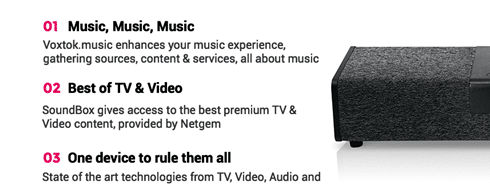In The Remote Age, Communications Tech Can Be All-Powerful
Remote working has come into force for digital business across the USA, and Stanford University research has found that it’s here to stay. A huge 42% of the US labor force now works full-time from home, making remote working the new normal – and bringing with it a new set of challenges. The post In The Remote Age, Communications Tech Can Be All-Powerful first appeared on The Secrets of Entrepreneurship.

Remote working has come into force for digital business across the USA, and Stanford University research has found that it’s here to stay. A huge 42% of the US labor force now works full-time from home, making remote working the new normal – and bringing with it a new set of challenges.
Key among these is the communication question. Even before, when email and phone were pervasive, interpersonal communication remained important in the good running of a business. Finding a method through which to replicate these communication methods and works for your business is essential to the continued growth of the employee experience.
A basic platform
For many businesses, the first step will come in establishing a communications platform. Sometimes made in-house, these software packages are more commonly one of the big players in the tech industry. A key area to look at when deciding is scale. Look at, for example, Yammer vs Teams.
The former is an excellent package for large-scale communications and engagement, whereas the latter can be better for team-level management of individual tasks and productivity.
According to Forbes, finding this first service, a basic foundation is important, but you must take further steps forwards after you’ve settled on a provider in order to make sure your remote communication is effective.
Interaction and engagement
Remote workers tend to be more disengaged, even if productivity is up. This was a finding of a Harvard Business review in 2018, and its findings have, if anything, become more relevant today. Tackling that feeling of disengagement can be difficult without meeting in person.
Communication platforms help to tackle this, and you should focus on two key factors in using them. Firstly, interaction – it can be easy to simply sit back in a meeting and let others do the talking. Use interactive features, like polls and perhaps games, to bring remote workers into the conversation.
Secondly, ensure that your platform has a full range of capabilities for communication in the way the employee wants – whether that’s text, email, voice, or video.
Look for talent
The free time that remote working generates can be put to good work for the company. People with more free time typically enjoy better career development prospects in line with their work-life balance – you can exploit this to your advantage in a remote working model.
Research conducted by McKinsey established that access to talent is improved through the lack of in-person premises, and this can be a more compelling way to inspire employees than any other. Again, the trick lies in communication.
Having effective communication of development and learning and opportunities, and the right tech to deliver that is best done through cherry-picking the best software platform. You’ll thank yourself in the long run.
In the remote working world, communications really can be that impactful. It can entirely transform the productivity and outlook of your business, bringing with it benefits across the board. Focusing on the employee will help you to find clarity and achieve this.













































































































